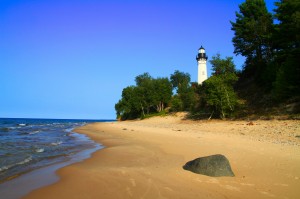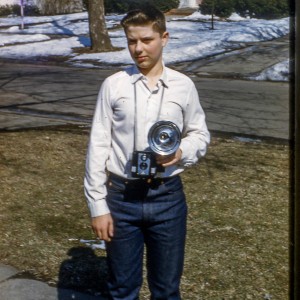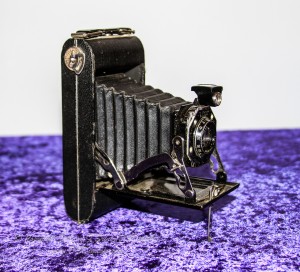 Once upon a time, far away in the land of Awesomebeauty, there was a beautiful lighthouse. The keeper of this lighthouse was named Canon Wealder. He was a rather short and obviously was well fed by his wife Nikon. Canon was better known to his friends by his nickname Photog. He was the town photographer and his pictures were known far and wide. He loved his town and he loved his lighthouse because both gave him the opportunity to take many beautiful pictures.
Once upon a time, far away in the land of Awesomebeauty, there was a beautiful lighthouse. The keeper of this lighthouse was named Canon Wealder. He was a rather short and obviously was well fed by his wife Nikon. Canon was better known to his friends by his nickname Photog. He was the town photographer and his pictures were known far and wide. He loved his town and he loved his lighthouse because both gave him the opportunity to take many beautiful pictures.
Every day, he would scour the countryside for beautiful sights to capture with his lens. If there were a storm brewing, he might spend the day up in the tower leaning on the outside railing with his trusty camera hanging at his side. As a new and unusual cloud or squall line formed, he would raise his camera, compose the perfect shot and slowly push down on the shutter button. CLICK, went the shutter and another slice of time was imprisoned on his film.
At night, he would go down in the basement level to his darkroom and carefully develop his negatives. He was a true artist with his camera and also in his darkroom. He would hang out his negatives to dry and when dry, he would put them in a folder with a note about each shot. As the years went by, his collection of photos grew larger and larger. He had multiple file cabinets full of pictures. He had to devote an entire storage room next to the darkroom for the storage.
One day, when he was looking through the files for a particular negative of his niece’s wedding, he thought to himself, “There must be a better way!” He thought about the County Library and the way they sorted their books and had index cards to tell where the books were on the shelf. “That’s it,” he thought. You will remember that he made notes on every picture taken and attached those notes to the pictures in the file folders. “Why not make a card catalog with these notes.” came a voice in his head. He went down to the storage files and put a descriptive name on each file cabinet and a more descriptive name on each drawer. Then he went through his thousands of file folders. He would take a file folder and remove the page with the picture notes. After determining the content of the folder, he would find the descriptive cabinet and drawer and place the folder in the drawer but not before he had named the folder. Next he made an additional notation on the the file page he had removed. As an example, he might find a folder with pictures from the city garden and place it in the “landscape” file cabinet and in the “city” drawer. He would then mark the folder “city garden”. On the folder note page, he would note the location; Landscape > City > City Garden. Success! It took several weeks to get the folders all organized but when he was finished, finding a picture was easy.
The next step was to make the index cards for his catalog. For nearly a month, he sat at his desk transferring the information from the note pages onto the index cards. Each picture had a card. The heading for the card was a short description of the picture. An example might be ” Michelle’s wedding – kiss at alter” . Below that, was any notes he had made about this picture like date, location, and people in the shot. The most important part of this note card was the location of the negative. Portraits > Family > Michelle’s wedding.
It was a work of art, this newly devised cataloging system. His picture negatives were safely stored in the basement storage room next to the Dark Room. There were even signs over the door; “Dark Room” and “Light Room” . On his card catalog, was a plaque, “Lightroom Catalog”
Now you might think that this would be the end of the story but it is not because at Photog’s death, his estate was distributed and some things sold. The Lightroom Catalog was separated from the negatives. The negatives were kept by the Photog’s wife but somehow in her grief, she sold the catalog case. She was never able to retrieve it. The only salvation was that Canon had sorted the negatives into descriptive files. Nikon spent the rest of her life trying to rebuild the Lightroom Catalog with the limited information she had. The notes about each picture were lost forever But at least, she had the pictures.
The moral of this story is: Drives crash and files are lost. Always store your picture files in descriptive folders to make recovery possible. Back up your Picture files regularly and back up your Lightroom Catalog as well. Make sure both are stored in a safe place. As I think about it, while it is not practical for me to try to store my more than 125,000 pictures to the cloud, storing a copy of the Lightroom Catalog might be a good idea.
Lightroom is a miraculous software. Don’t underestimate the value of the “Library module”. The “Develop Module is great to make your pictures look better but if you can’t find the picture you want, what good is it? Also remember that all the revisions to your picture files are stored in the Lightroom Catalog. If you lose the catalog, you lose everything you did in the “Develop Module”. You are back to the original files! That’s how non-destructive editing works. Yes, you always have the original file to go back to which is very important but all the revisions are stored separately unless you export the revised version to be saved. One option might be to shoot in RAW, make your changes and then export the new optimized file to jpeg in the same location. This might give you the best of both worlds if the Catalog is lost. Best solution; Back-up, Back-up, Back-up!
Feel free to leave a comment and/or share this article.











